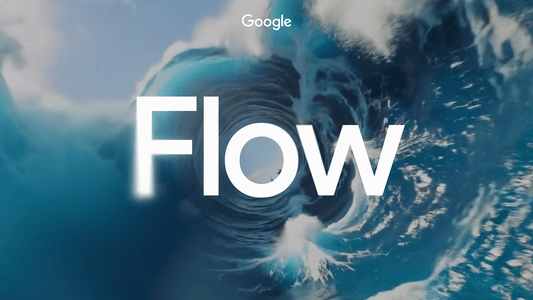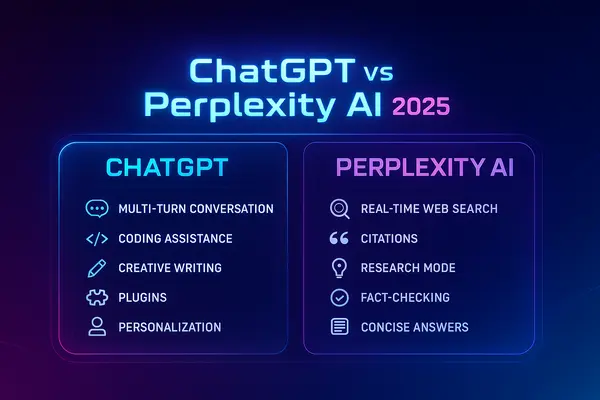Table of Contents
Artificial Intelligence is rapidly transforming creative industries, and Google Flow is Google’s latest leap into AI-powered video creation. Announced at Google I/O 2025, Flow combines the power of Google’s cutting-edge models — Veo-3, Imagen-4, and Gemini — to help creators make short cinematic films with unprecedented ease.
But what exactly is Google Flow, how does it work, and what makes it different from competitors like Runway, Pika Labs, and OpenAI’s Sora? Let’s explore everything you need to know.

What is Google Flow?
Google Flow is an AI filmmaking platform designed for creators, studios, and businesses. Unlike most text-to-video apps, Flow acts like a mini film studio, where you can:
- Generate cinematic video clips with Veo-3.
- Produce realistic images using Imagen-4.
- Use Gemini AI for storytelling, scripts, and scene structuring.
- Edit, refine, and manage video assets all in one dashboard.
- Share and discover AI films through Flow TV.
Key Features of Google Flow
1. Veo-3: Next-Gen Video AI
Veo-3 generates up to 8-second cinematic clips with rich detail, smooth camera movements, and realistic lighting.
2. Imagen-4: Photorealistic Image AI
Need background shots or props? Imagen-4 produces photorealistic images that blend seamlessly into Flow’s video clips.
3. SceneBuilder
Flow lets creators storyboard ideas. You can connect multiple clips, adjust camera positions, and control angles for storytelling.
4. Flow TV
A built-in hub to watch, share, and showcase AI-generated films. This creates community and discoverability.
5. Subscription Tiers
- Flow Pro → for individual creators, budget-friendly.
- Flow Ultra → advanced tools, higher resolution, and priority rendering for studios.
Availability & Global Launch
- Launched at Google I/O 2025.
- Expanded to 77+ countries within weeks.
- Already generated over 100 million AI video clips.
- Mobile + web versions available.
How Google Flow Works (Step by Step)
- Prompt: Type a description → e.g., “Rainy Tokyo street at night, neon lights reflecting on wet ground.”
- AI Models Activate:
- Veo-3 → cinematic video.
- Imagen-4 → additional images.
- Gemini → scripts & scene logic.
- Editing: Adjust lighting, angles, and movement.
- Publishing: Export clips or share directly via Flow TV.
Why Google Flow Stands Out
- Cinematic control not seen in Pika Labs or Runway.
- Integrated AI models ensure better consistency.
- Community ecosystem with Flow TV.
- Scalability → usable by solo creators and professional studios.
Comparison: Google Flow vs Other AI Video Tools
| Feature | Google Flow | Runway Gen-3 | Pika Labs | OpenAI Sora (Beta) |
|---|---|---|---|---|
| Clip Length | ~8 sec | 4–6 sec | 3–5 sec | 60+ sec (beta only) |
| Cinematic Control | High | Medium | Low | High |
| Community Hub | Yes (Flow TV) | No | No | No |
| Availability | 77+ countries | Global | Global | Closed beta |
Limitations of Google Flow
- Clip length currently capped at ~8 seconds.
- Ultra-tier features limited to select regions.
- Longer film creation requires clip stitching.
Use Cases of Google Flow
- Content Creators → Short films, TikTok/Instagram Reels, YouTube Shorts.
- Studios → Pre-visualization, concept design.
- Marketers → Ads and product storytelling.
- Educators → Visual learning content.
Future Roadmap (Expected Updates)
Google has announced:
- Longer clip generation (beyond 8 sec).
- Direct YouTube publishing integration.
- Collaborative editing features.
- Wider Ultra subscription rollout.
Pros & Cons of Google Flow
Pros:
✔ High-quality cinematic AI videos
✔ Strong ecosystem (Veo-3, Imagen-4, Gemini)
✔ Flow TV community
✔ Scales from solo to studio
Cons:
✘ Short clip length
✘ Premium features require subscription
✘ Limited Ultra availability
FAQs About Google Flow
Q1: Is Google Flow free?
No, it runs on subscription tiers: Pro and Ultra.
Q2: Can I monetize Flow-generated videos?
Yes, but must follow Google AI usage policies. Platforms like YouTube may require disclosure.
Q3: How is Flow different from OpenAI’s Sora?
Sora can generate longer videos, but is still closed beta. Flow is publicly available and structured around storytelling.
Q4: Where can I access Google Flow?
Available on web and mobile, across 77+ countries.
Q5: What industries benefit most from Flow?
Film, advertising, content creation, and education.
Conclusion
Google Flow isn’t just another AI video generator — it’s a complete AI filmmaking ecosystem. By merging Veo-3, Imagen-4, and Gemini, it gives creators unprecedented control over cinematic storytelling. While still limited by short clip length, its scalability, community features, and Google ecosystem integration make it a serious competitor in the AI video space.
As AI filmmaking evolves, Flow positions itself as a platform where anyone can become a director, regardless of budget or skill level.
You May Also Like
- Looking for premium design resources? Explore our Back Cover collection for creative solutions.
- Don’t miss our in-depth guide on Back Cover and how it elevates your brand presence.
- Check out Back Cover insights to discover design, strategy, and branding tips.
- For related topics, visit our Back Cover page.
Thank You & Keep Going!
“Thank you so much for taking the time to read this! I genuinely hope you found it useful and that it gave you some new ideas or clarity. Remember, every small step counts, and you’re doing amazing just by seeking knowledge and making informed choices. Keep exploring, keep learning, and don’t hesitate to try new things—you never know what great opportunities await! I truly appreciate your trust in reading my thoughts, and I


